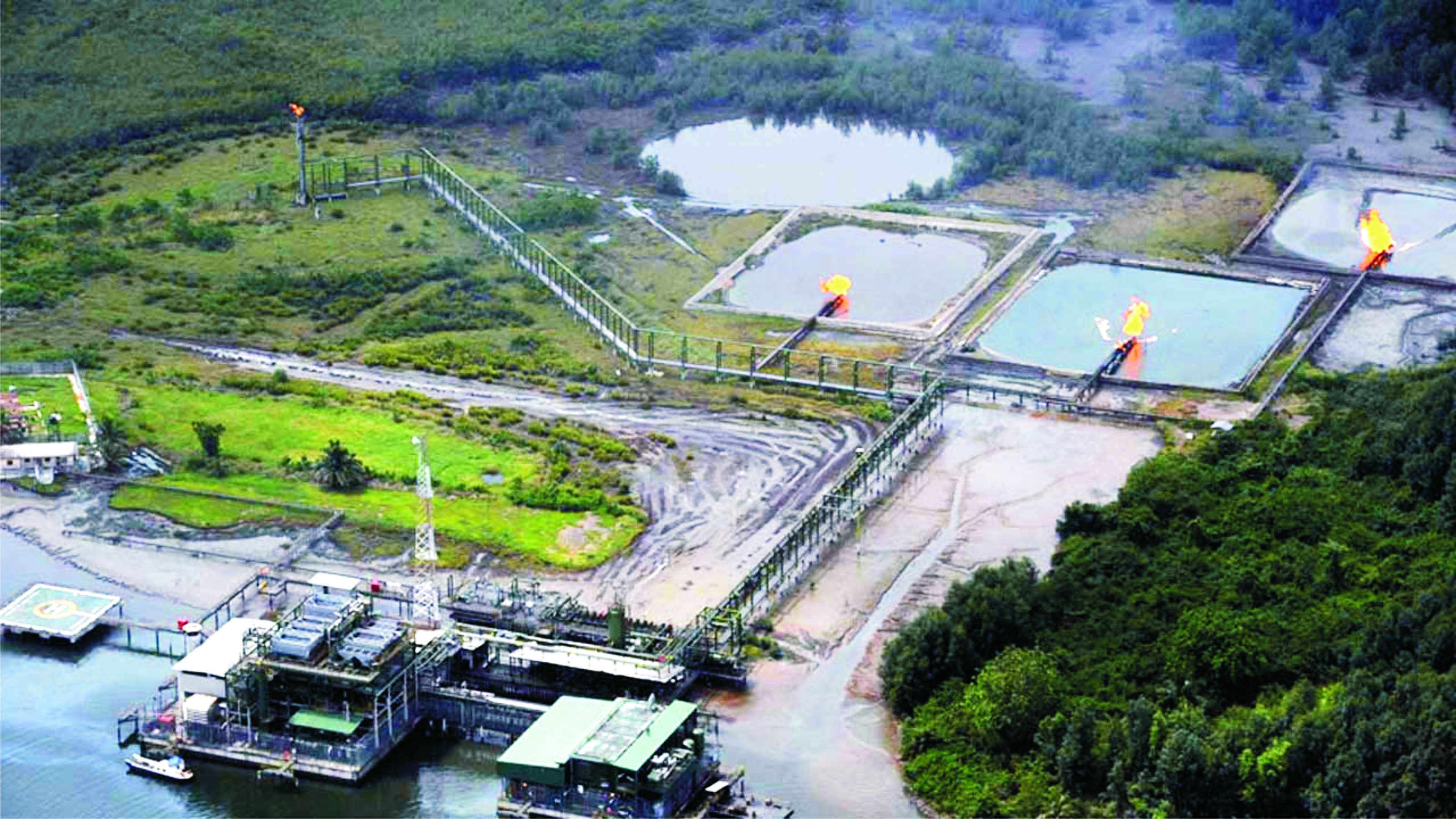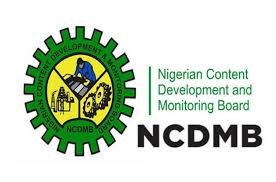Oil & Energy
Nigeria Doubles Down On Oil After Years Of Trouble

After months of stalling because of Covid restrictions and OPEC cuts, as well as significant international criticism over misplaced funds, Nigeria appears to be optimistic about the future of its faltering oil industry in a time when few others are.
The Nigerian government announced this week that it expects the country to produce 1.88 million barrels per day of crude oil in 2022, assuming a benchmark price of $57 per barrel. In the 2022-2024 Medium-Term Expenditure Framework (MTEF), just approved by the senate, the government also predicted GDP growth of 4.2 percent and inflation of 13 percent in 2022. Inflation in Nigeria decreased to 17.01 percent in August, in a country that has continued to struggle with a double-digit inflation rate since 2016.
This is a highly optimistic plan seeing as Nigeria, Africa’s largest economy, was hit particularly hard by the Covid-19 pandemic, from which it is still recovering. The Nigerian economy contracted 1.92 percent in 2020, after a growth of 2.92 percent in 2019. However, the contraction was lower than the World bank estimate of a 4 percent contraction or the IMF estimate of 3.2 percent.
The hopeful budget approval follows President Muhammadu Buhari’s signing of the Petroleum Industry Bill into law in August. This comes after two long decades of delays in approving the PIB, at a time when much of the rest of the world is moving away from fossil fuel strategies towards green policies with a focus on renewable energy. Plans to stop the sale of diesel and petroleum vehicles as well as targets for net zero-carbon emissions by 2050, across Europe and North America, make the new Petroleum Industry Act (PIA) appear somewhat outdated.
However, advocates for the Bill believe that the African continent will continue to rely on oil production for fuel well into the next decade. Related: U.S. Oil Rig CThe President stated in August at the inauguration of the Steering Committee and PIA Implementation Group that Nigeria may have lost as much as $50 billion worth of investment because of years of delays in enacting the PIA, as investors were uncertain of Nigeria’s oil and gas outlook.
There has been significant criticism over Nigeria’s failure to establish a better regulatory environment for its oil and gas industry until now, which would have increased investor interest in the region. This is particularly pertinent at a time when other African states are beginning to develop their oil industries, and further competition comes from new emerging markets such as Guyana and Suriname.
Critics also point towards the $14 billion in funds provided to develop the Niger Delta region, the heart of the Nigerian oil industry, that was ill spent between 2001 and 2019. The funds were expected to support projects to “offer a lasting solution to the socio-economic difficulties of the Niger Delta Region and to facilitate the rapid and sustainable development of the Niger Delta into a region that is economically prosperous, socially stable, ecologically regenerative and politically peaceful.”
The inability to establish an adequate regulatory environment for foreign oil and gas investors for so long, as well as government’s failure to use funds to develop its oil-rich Delta Niger region, have put the country at the bottom of the list for many investors now attracted to up-and-coming oil regions without such a difficult past in the sector.
Not to forget, Nigeria is not out of the woods, still battling with reduced OPEC+ oil quotas and the lack of investment that came alongside them. Angola, Nigeria, and Kazakhstan have failed to increase their oil production in line with the OPEC+ easing of cuts this August, primarily due to years of underinvestment in the oil-rich nations’ energy industries.
In addition, concerns around Covid-19 restrictions continue to plague Nigeria’s oil industry, as the Delta region faces yet another lockdown if cases continue to rise. The challenges of 2020 could be seen all over again should Rivers State go into lockdown, with oil firms facing difficulties in transporting personnel to and from oil fields, as well as restrictions affecting pipeline and facilities maintenance, as was the case last year.
But the Nigerian government and those left in Nigeria’s oil industry are hopeful that ongoing demand from the African continent and increasing demand from Asia for oil and gas could help boost the country’s appeal following the enactment of the PIA. With 37 billion barrels of proven oil reserves, ranking 10th in the world, Nigeria has always had significant potential to become oil superstar but has until now lacked the regulatory framework to make this dream a reality until now.
So, the question is whether the “landmark” PIA will really be as ground-breaking for Nigeria’s oil industry as once hoped. The Nigerian government holds out hope for the new Act attracting greater foreign investment in the oil-rich nation, but time is yet to tell whether oil majors are willing to take a gamble on the African state so late in the game.
Other companies that look to capitalize on higher on prices this year:
Transocean (NYSE:RIG) After having missed on earnings for a number of quarters in a row, this offshore rig giant is seeing opportunities left and right as oil majors are once again betting big on offshore oil & gas production. The increasing market for offshore operations couldn’t come at a better time for Transocean, which remains one of the more speculative plays in its sector.
At the moment, the company is looking to expand its footprint in the Gulf of Mexico. Earlier this month, it landed a $252 million firm contract for its new, ultra-deepwater drillship, the Deepwater Atlas. Transocean’s client, BOE Exploration & Production LLC looks to commence operations at the Shenandoah project in the 3rd quarter of 2022.
Suncor Energy (NYSE:SU; TSE:SU): Suncor has been in the news this week as it decided to shut down some of its oil sands production due to a mechanical disruption. Syncrude, majority owned by Suncor, produces some 275,000 bpd of crude oil from bitumen at its upgrader in Alberta, according to the latest data, which was for January to May. Despite the disruption, Suncor remains one of the most attractive oil plays in Canada, which some see as the best contrarian oil bets out there.
Suncor’s relatively low extraction costs per barrel, coupled with strict ESG standards and long lasting reserves make the company interesting for long-term oil investors.
And Suncor isn’t just focusing on its flagship Syncrude project. Two weeks ago, the company announced the plan to extend the life of the Terra Nova FPSO. Together with Murphy Oil and Cenovus, and with support from the local government, Suncor looks to extend the production life of the Terra Nova FPSO by around 10 years.
Royal Dutch Shell (NYSE:RDS.A) Shell has been the target of activist investors and environmentalists alike in 2021, and the Dutch court decision that forces Shell to reduce carbon intensity has accelerated the company’s plans to decarbonize.
This week, Royal Dutch Shell announced that it would sell off its Permian operations to ConocoPhillips for a total sum of $9.5 billion. Instead of reinvesting the entire sum in new energy projects, Shell decided to distribute $7 billion to shareholders. The Anglo-Dutch company is ramping up renewable investments around the planet in a bid to become carbon neutral by 2050. Shell’s latest investments. Its most recent bets on renewables include solar PV installations in Brazil and a major biofuel refinery in Rotterdam, the Netherlands.
By: Felicity Bradstock
Bradstock writes from Oilprice.com
Oil & Energy
FG Woos IOCs On Energy Growth
The Federal Government has expressed optimism in attracting more investments by International Oil Companies (IOCs) into Nigeria to foster growth and sustainability in the energy sector.
This is as some IOCs, particularly Shell and TotalEnergies, had announced plans to divest some of their assets from the country.
Recall that Shell in January, 2024 had said it would sell the Shell Petroleum Development Company of Nigeria Limited (SPDC) to Renaissance.
According to the Minister of State for Petroleum Resources (Oil), Heineken Lokpobiri, increasing investments by IOCs as well as boosting crude production to enhancing Nigeria’s position as a leading player in the global energy market, are the key objectives of the Government.
Lokpobiri emphasized the Ministry’s willingness to collaborate with State Governments, particularly Bayelsa State, in advancing energy sector transformation efforts.
The Minister, who stressed the importance of cooperation in achieving shared goals said, “we are open to partnerships with Bayelsa State Government for mutual progress”.
In response to Governor Douye Diri’s appeal for Ministry intervention in restoring the Atala Oil Field belonging to Bayelsa State, the Minister assured prompt attention to the matter.
He said, “We will look into the issue promptly and ensure fairness and equity in addressing state concerns”.
Lokpobiri explained that the Bayelsa State Governor, Douyi Diri’s visit reaffirmed the commitment of both the Federal and State Government’s readiness to work together towards a sustainable, inclusive, and prosperous energy future for Nigeria.
While speaking, Governor Diri commended the Minister for his remarkable performance in revitalisng the nation’s energy sector.
Oil & Energy
Your Investment Is Safe, FG Tells Investors In Gas
The Federal Government has assured investors in the nation’s gas sector of the security and safety of their investments.
Minister of State for Petroleum Resources (Gas), Ekperikpe Ekpo, gave the assurance while hosting top officials of Shanghai Huayi Energy Chemical Company Group of China (HUAYI) and China Road and Bridge Corporation, who are strategic investors in Brass Methanol and Gas Hub Project in Bayelsa State.
The Minister in a statement stressed that Nigeria was open for investments and investors, insisting that present and prospective foreign investors have no need to entertain fear on the safety of their investment.
Describing the Brass project as one critical project of the President Bola Tinubu-led administration, Ekpo said.
“The Federal Government is committed to developing Nigeria’s gas reserves through projects such as the Brass Methanol project, which presents an opportunity for the diversification of Nigeria’s economy.
“It is for this and other reasons that the project has been accorded the significant concessions (or support) that it enjoys from the government.
“Let me, therefore, assure you of the strong commitment of our government to the security and safety of yours and other investments as we have continually done for similar Chinese investments in Nigeria through the years”, he added.
Ekpo further tasked investors and contractors working on the project to double their efforts, saying, “I want to see this project running for the good of Nigeria and its investors”.
Earlier in his speech, Leader of the Chinese delegation, Mr Zheng Bi Jun, said the visit to the country was to carry out feasibility studies for investments in methanol projects.
On his part, the Managing Director of Brass Fertiliser and Petrochemical Ltd, Mr Ben Okoye, expressed optimism in partnering with genuine investors on the project.
Oil & Energy
Oil Prices Record Second Monthly Gain
Crude oil prices recently logged their second monthly gain in a row as OPEC+ extended their supply curb deal until the end of Q2 2024.
The gains have been considerable, with WTI adding about $7 per barrel over the month of February.
Yet a lot of analysts remain bearish about the commodity’s prospects. In fact, they believe that there is enough oil supply globally to keep Brent around $81 this year and WTI at some $76.50, according to a Reuters poll.
Yet, like last year in U.S. shale showed, there is always the possibility of a major surprise.
According to the respondents in that poll, what’s keeping prices tame is, first, the fact that the Red Sea crisis has not yet affected oil shipments in the region, thanks to alternative routes.
The second reason cited by the analysts is OPEC+ spare capacity, which has increased, thanks to the cuts.
“Spare capacity has reached a multi-year high, which will keep overall market sentiment under pressure over the coming months”, senior analyst, Florian Grunberger, told Reuters.
The perception of ample spare capacity is definitely one factor keeping traders and analysts bearish as they assume this capacity would be put into operation as soon as the market needs it. This may well be an incorrect assumption.
Saudi Arabia and OPEC have given multiple signs that they would only release more production if prices are to their liking, and if cuts are getting extended, then current prices are not to OPEC’s liking yet.
There is more, too. The Saudis, which are cutting the most and have the greatest spare capacity at around 3 million barrels daily right now, are acutely aware that the moment they release additional supply, prices will plunge.
Therefore, the chance of Saudi cuts being reversed anytime soon is pretty slim.
Then there is the U.S. oil production factor. Last year, analysts expected modest output additions from the shale patch because the rig count remained consistently lower than what it was during the strongest shale boom years.
That assumption proved wrong as drillers made substantial gains in well productivity that pushed total production to yet another record.
Perhaps a bit oddly, analysts are once again making a bold assumption for this year: that the productivity gains will continue at the same rate this year as well.
The Energy Information Administration disagrees. In its latest Short-Term Energy Outlook, the authority estimated that U.S. oil output had reached a record high of 13.3 million barrels daily that in January fell to 12.6 million bpd due to harsh winter weather.
For the rest of the year, however, the EIA has forecast a production level remaining around the December record, which will only be broken in February 2025.
Oil demand, meanwhile, will be growing. Wood Mackenzie recently predicted 2024 demand growth at 1.9 million barrels daily.
OPEC sees this year’s demand growth at 2.25 million barrels daily. The IEA is, as usual, the most modest in its expectations, seeing 2024 demand for oil grow by 1.2 million bpd.
With OPEC+ keeping a lid on production and U.S. production remaining largely flat on 2023, if the EIA is correct, a tightening of the supply situation is only a matter of time. Indeed, some are predicting that already.
Natural resource-focused investors Goehring and Rozencwajg recently released their latest market outlook, in which they warned that the oil market may already be in a structural deficit, to manifest later this year.
They also noted a change in the methodology that the EIA uses to estimate oil production, which may well have led to a serious overestimation of production growth.
The discrepancy between actual and reported production, Goehring and Rozencwajg said, could be so significant that the EIA may be estimating growth where there’s a production decline.
So, on the one hand, some pretty important assumptions are being made about demand, namely, that it will grow more slowly this year than it did last year.
This assumption is based on another one, by the way, and this is the assumption that EV sales will rise as strongly as they did last year, when they failed to make a dent in oil demand growth, and kill some oil demand.
On the other hand, there is the assumption that U.S. drillers will keep drilling like they did last year. What would motivate such a development is unclear, besides the expectation that Europe will take in even more U.S. crude this year than it already is.
This is a much safer assumption than the one about demand, by the way. And yet, there are indications from the U.S. oil industry that there will be no pumping at will this year. There will be more production discipline.
Predicting oil prices accurately, even over the shortest of periods, is as safe as flipping a coin. With the number of variables at play at any moment, accurate predictions are usually little more than a fluke, especially when perceptions play such an outsized role in price movements.
One thing is for sure, though. There may be surprises this year in oil.
lrina Slav
Slav writes for Oilprice.com.
-

 News3 days ago
News3 days agoEx-Senate President Donates School, Healthcare Centre To Yobe Govt
-

 Niger Delta3 days ago
Niger Delta3 days agoIndorama Denies Alleged Environmental Pollution
-

 News3 days ago
News3 days agoFAAC: FG, States, LGs Share N1.123trn
-

 Business3 days ago
Business3 days agoNCDMB Rakes In $1m Return On NEDOGAS Investment
-

 News3 days ago
News3 days agoITF Expends N1.1bn On SIWES Allowances-DG
-

 News3 days ago
News3 days agoWomen Voters Seek FIDA’s Support Against Gender-Based Violence
-
Rivers3 days ago
Group Urges Disloyal Exco Members To Resign
-

 News3 days ago
News3 days agoFG Set To Receive Fresh $2.2bn World Bank Loan

